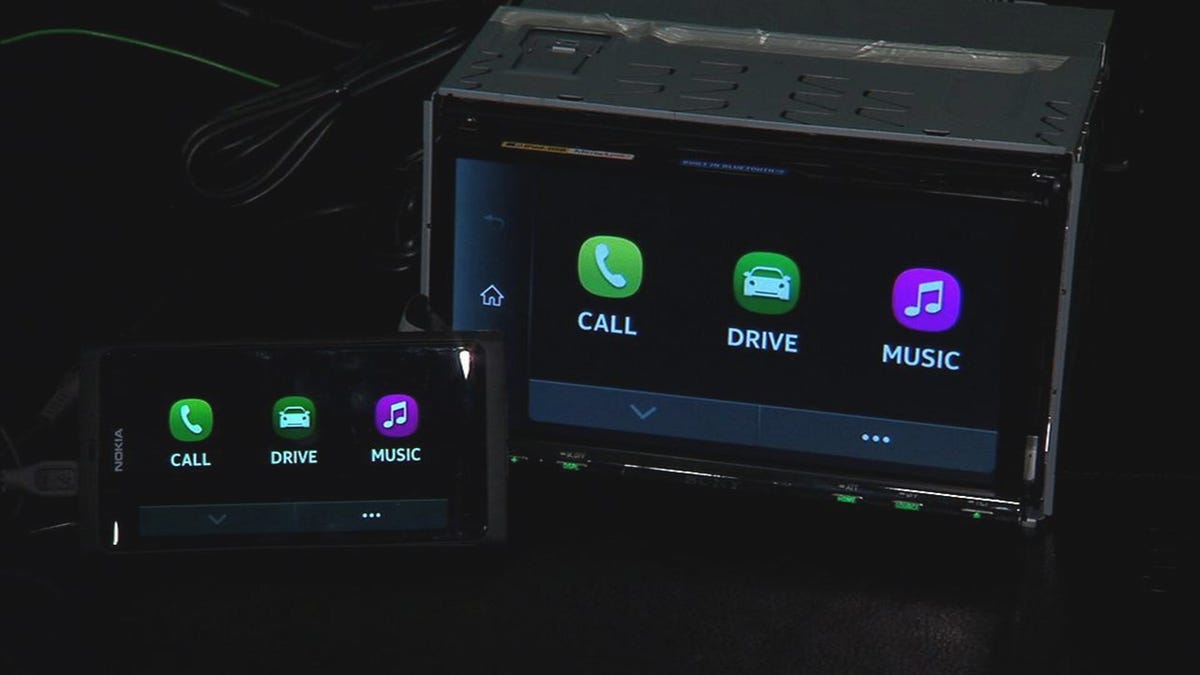MirrorLink turns cars into dumb terminals
The Connected Car Consortium demonstrated MirrorLink 1.0 at the 2012 Los Angeles Auto Show, a means of replicating smartphone functionality in a car dashboard.

LOS ANGELES -- Modern cars play digital music, guide us to destinations, and respond to voice commands. But so do our smartphones. Through a technology called MirrorLink, the Connected Car Consortium (CCC) hopes to rid us of this duplication, using the car's LCD and interface to show navigation and play music from a smartphone.
The MirrorLink initiative turns the car into a dumb terminal, lacking much in the way of its own computing power and relying on the phone as its processor. One advantage of this system for the user is that the same data stored on the phone appears on the car's dashboard, which comes in handy if you have a set of addresses stored in your phone's navigation app, for example. However, MirrorLink would also rely heavily on the phone's data connection, GPS antenna, and processor, which might be less capable or slower than that found in a car.
Current hands-free phone and digital audio systems in cars already leverage much of a phone's capabilities, but MirrorLink gives automakers a common platform.
At the LA Auto Show, Alan Ewing, executive director for the CCC, demonstrated MirrorLink 1.0. This initial version only offers three apps labeled Call, Drive, and Music. Ewing connected a Nokia Windows phone to a Sony head unit, both enabled with the MirrorLink protocol. Both devices showed the same interface, which was generated on the phone.
Touching the Drive icon on the head unit launched the phone's navigation app, with the map display appearing on the head unit. Likewise, touching the Music icon showed the phone's music library on the head unit.
With MirrorLink 1.0, Ewing had to have the phone cabled to the head unit, as Bluetooth does not offer robust enough communications to handle all the functions. Nokia has been a big proponent of the CCC and MirrorLink, but the system also works with some versions of Android, according to Ewing. Apple has not joined the CCC, so the iPhone does not support MirrorLink.
Ewing expects to launch MirrorLink 1.1 next year, which will offer a better wireless solution along with the ability to integrate third party apps. MirrorLink 1.1 will enable the new Wi-Fi Direct standard, which creates peer connections between devices and offers a more flexible data channel than Bluetooth. The third-party app capability would open up MirrorLink to companies such as Pandora or Yelp, although each app would have to undergo an approval process to make sure it is safe to use in the car.
Likewise, each car manufacturer would dictate what the interface looks like in their vehicles, and be able to rule out any features deemed distracting or unsafe to use while driving. Every major auto manufacturer has joined the CCC, and Ewing says that models will be rolling off the line in 2013 enabled with MirrorLink 1.1, although he would not specify which models out of respect for automakers' production schedules.

